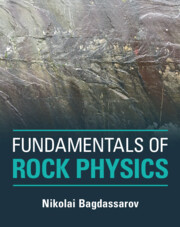Book contents
- Fundamentals of Rock Physics
- Fundamentals of Rock Physics
- Copyright page
- Dedication
- Contents
- Preface
- 1 Introduction
- 2 Density and Porosity
- 3 Stresses in Rocks
- 4 Mechanical Strain and Elastic Moduli
- 5 Permeability of Rocks
- 6 Mechanical Properties of Fluid-Bearing Rocks
- 7 Acoustic Properties of Rocks
- 8 Electric Resistivity
- 9 Dielectric Properties
- 10 Magnetic Properties of Rocks
- 11 Thermal Properties of Rocks and Minerals
- 12 Radioactive Properties of Rocks
- Index
- References
5 - Permeability of Rocks
Published online by Cambridge University Press: 19 November 2021
- Fundamentals of Rock Physics
- Fundamentals of Rock Physics
- Copyright page
- Dedication
- Contents
- Preface
- 1 Introduction
- 2 Density and Porosity
- 3 Stresses in Rocks
- 4 Mechanical Strain and Elastic Moduli
- 5 Permeability of Rocks
- 6 Mechanical Properties of Fluid-Bearing Rocks
- 7 Acoustic Properties of Rocks
- 8 Electric Resistivity
- 9 Dielectric Properties
- 10 Magnetic Properties of Rocks
- 11 Thermal Properties of Rocks and Minerals
- 12 Radioactive Properties of Rocks
- Index
- References
Summary
Darcy’s law connects the gradient of pressure and flow velocity in rocks via their permeability κ. Depending on flow velocity, pressure and matrix properties, there are law corrections after Forchheimer, Brinkman and Klinkenberg. Rock permeability depends on ambient pressure, temperature and deviatoric stresses. In sedimentary rocks the permeability is affected by quartz content, gravel fractions and grain sorting. There are two different permeability models for rocks: the capillary model of pores and the fracture model. For granular rocks the Kozeny–Carman equation is applicable, in which hydraulic radius and degree of tortuosity are involved. The effect of pore pressure can be described using the effective pressure transfer coefficient. Permeability and relative pore saturation are connected via the van Genuchten equation. Focus Box 5.1: Darcy flow in ducts of various geometry.
Keywords
- Type
- Chapter
- Information
- Fundamentals of Rock Physics , pp. 178 - 210Publisher: Cambridge University PressPrint publication year: 2021



